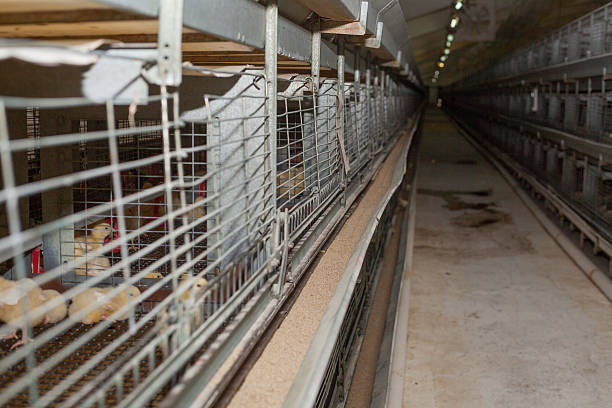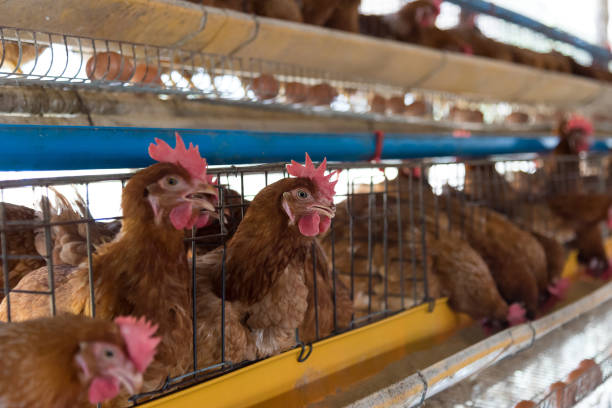Investing in 30000 Chicken Battery Cages: Price Factors in Nigeria
Investing in 30000 Chicken Battery Cages: Price Factors in Nigeria
The Nigerian poultry industry is expanding, presenting lucrative opportunities for entrepreneurs. Investing in battery cage systems for egg-laying chickens can be a smart move. However, understanding the cost implications, particularly when planning for a large-scale operation involving 30,000 chickens, is crucial. This guide delves into the various price factors that impact the overall investment in battery cages for your Nigerian poultry farm.
What are Battery Cages?
Before dissecting the pricing, it’s important to have a clear picture of what battery cages are. Battery cages are a housing system primarily used for laying hens. They consist of rows and tiers of identical cages joined together, sharing common walls or dividers. Typically made of galvanized steel wire mesh, they provide a controlled environment for the chickens, allowing for easier egg collection, better hygiene, and efficient management.
Why Choose Battery Cages for Your Poultry Farm?
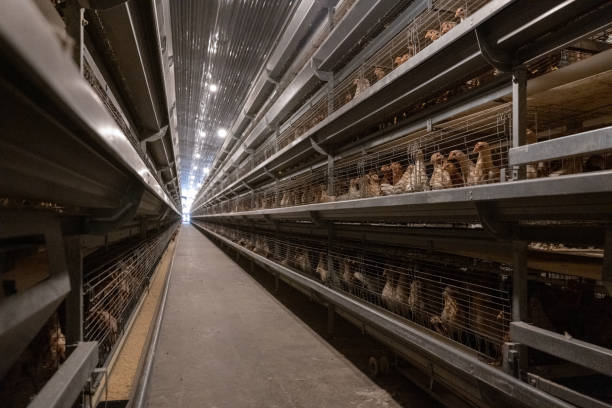
Several benefits come with using battery cages, which make them a popular choice for commercial egg production in Nigeria:
Increased Egg Production: Battery cages optimize egg production by providing each hen with individual space and control over environmental factors.
Improved Hygiene: The design facilitates easy cleaning and waste removal, reducing the risk of disease outbreaks.
Efficient Space Utilization: Battery cages maximize the number of birds that can be housed in a given space, improving space efficiency.
Easier Management: Monitoring and managing the flock becomes simpler with individualized cages.
Reduced Labor Costs: Automated systems for feeding, watering, and egg collection can significantly lower labor requirements.
Key Price Factors Influencing the Cost of 30000 Chicken Battery Cages in Nigeria:
The total cost of setting up a battery cage system for 30,000 chickens in Nigeria isn’t just about the cages themselves. Several factors contribute to the overall investment; understanding these elements will allow for accurate budgeting and informed decision-making.
Type of Battery Cage System:
A-Frame Cages: A-frame cages are a common choice in Nigeria due to their affordability and ease of installation. They are typically arranged in an A-shape, offering good ventilation and visibility.
H-Frame Cages: H-frame cages are more advanced and feature a stacked design, optimizing space utilization even further. They often incorporate automated feeding and egg collection systems, which drive up the initial cost but reduce long-term labor expenses.
Tiered Cages: These cages are arranged in multiple tiers, maximizing space utilization though they can be more complicated to manage if not automated.
Price impact: More advanced and automated systems (like H-frame) are significantly more expensive than simpler, manual systems (like A-frame).
Cage Material and Construction Quality:
Galvanized Steel Wire Mesh: Most battery cages are constructed of galvanized steel wire mesh. The quality of galvanization is crucial. Hot-dip galvanization provides superior rust protection and durability compared to electro-galvanization.
Wire Thickness: Thicker wire gauge provides greater strength and longevity. Inferior quality cages with thin wire and poor galvanization will be cheaper upfront but will corrode and require replacement sooner, resulting in higher long-term costs.
Price impact: Higher quality materials translate to a more durable and long-lasting system, justifying a higher initial investment.
Automation Level:
Manual Systems: These basic systems require manual feeding, watering, and egg collection. They are the most affordable option initially.
Semi-Automated Systems: These may feature automatic feeding or watering systems but require manual egg collection.
Fully Automated Systems: Fully automated systems incorporate automatic feeding, watering, egg collection, and manure removal. They offer the greatest efficiency and reduced labor costs but come with a higher upfront price tag.
Price impact: Automation drastically affects cost. Full automation will significantly increase the initial investment but reduce operational expenses over time.
Capacity per Cage:
The number of birds housed per cage directly impacts the overall number of cages needed. Cages typically house 3-5 birds, but it depends on the cage size and the breed of chicken. Carefully consider bird welfare when determining cage density. Some countries will provide clear guidelines on how many birds can be housed in one cage.
Price impact: Higher capacity per cage can reduce the overall number of cages required, lowering the total cost. However, ensure that stocking density adheres to animal welfare standards.
Manufacturer and Supplier:
The reputation and location of the manufacturer or supplier significantly impact pricing. Established manufacturers with a proven track record of quality and reliability may charge more than less known suppliers.
Importing cages from overseas, such as from China, may seem cheaper initially. But you also need to consider the extra costs of shipping, import duties, and potential delays, and communication barriers.
Price impact: Choose a reputable supplier that offers quality products and reliable after-sales support even if it means paying a little more up front. It contributes to the profitability and sustainability of your farm.
Installation Costs:
The cost of installing the battery cage system needs to be factored into the overall budget. This includes the cost of labor, any necessary site preparation, and connecting the cages to water and electricity supplies.
Sophisticated systems may need skilled technicians for assembly and commissioning, adding to the installation expenses.
Price impact: Include all costs associated with getting the system up and running to avoid budget surprises.
Building Infrastructure:
The type and condition of the building where you will be housing the cages will have a cost associated with it. If you’re building from scratch, you will need to factor in the cost of construction materials, labor, and permits. If you are retrofitting an existing structure, you may need to make modifications to accommodate the cage system to install ventilation and insulation.
Price impact: Existing structures may reduce upfront costs, but new construction allows for optimized design for biosecurity and environmental control.
Location and Transportation Costs:
Transportation costs from the supplier to your farm in Nigeria can be significant, especially if you are located in a remote area.
Consider local suppliers, as their shipping costs may be less.
Price impact: Factor in transportation costs when comparing quotes from different suppliers.
Currency Exchange Rates:
If you are importing cages from overseas, fluctuating currency exchange rates can impact the final cost in Naira.
It’s important to monitor exchange rates and factor in potential fluctuations when budgeting.
Price impact: Exchange rate volatility can significantly impact the final cost of imported equipment.
Government Policies and Regulations:
Import duties, taxes, and other government regulations can affect the cost of battery cages.
Staying informed about current policies is essential for accurate budgeting.
Price impact: Government policies can significantly impact the overall cost of the project.
Estimating the Cost of 30000 Chicken Battery Cages in Nigeria:
It is impossible to give an exact figure without specific details. However, to provide a general idea, let’s look at a potential cost breakdown. This should be considered a rough estimate, and it’s essential to obtain quotes from several suppliers for accurate pricing.
A-Frame Cages (Manual System): For a manual A-frame system, the cost per cage (holding 3-5 birds) could range from $20 to $40. For 30,000 birds, you’d need approximately 6,000 to 10,000 cages. This will bring the total cage cost to between $120,000 and $400,000.
H-Frame Cages (Fully Automated System): A fully automated H-frame system can cost significantly more, ranging from $80 to $150 per cage. With 6,000 to 10,000 cages needed, the total cost could range from $480,000 to $1,500,000.
Building/Retrofitting Costs: This could range from $50,000 to $200,000 depending on the scope of work required.
Installation Costs: Expect to spend between $10,000 and $50,000 on installation, depending on the complexity of the system.
Transportation Costs: These could range from $5,000 to $20,000, depending on the location of the supplier and your farm.
Additional Costs to Consider:
Beyond the cost of the cages and installation, remember to include these additional expenses in your budget:
Land Acquisition: Purchasing or leasing land for the poultry farm is a significant initial expense.
Chicken Purchase: The cost of day-old chicks or point-of-lay hens.
Feed and Water: Provision for sufficient feed and water for your flock.
Veterinary Care: Budget for vaccinations and treatment for unexpected illnesses.
Labor Costs: Salaries for farm workers.
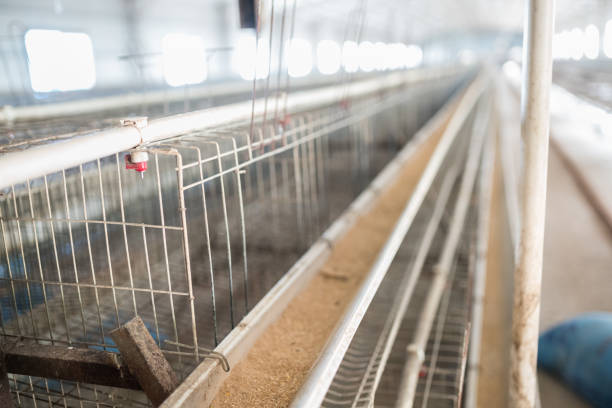
Electricity and Water Bills: Ongoing utility expenses.
Waste Management: Cost of effective waste management practices.
Contingency Fund: Set aside a contingency fund for unexpected expenses.
Tips for Minimizing Costs:
Get Multiple Quotes: Compare quotes from several suppliers to ensure you get the best possible price.
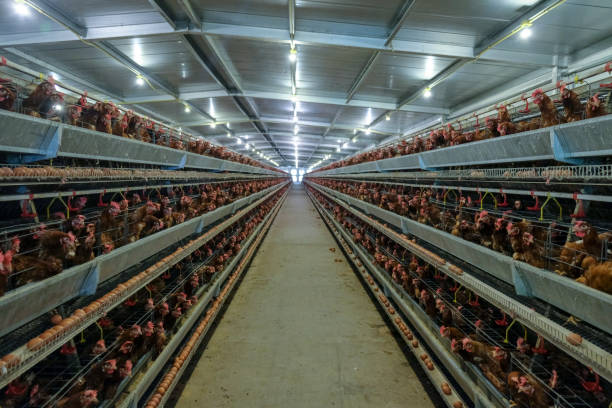
Consider Local Suppliers: Sourcing cages from local manufacturers can reduce transportation costs.
Phased Implementation: Consider implementing the system in phases to spread out the investment.
Negotiate with Suppliers: Don’t be afraid to negotiate prices with suppliers.
Proper Maintenance: Regular maintenance can extend the lifespan of the cages and prevent costly repairs.
Second Hand: Evaluate the option of buying second hand battery cages, it will save you considerable costs.
Making the Right Investment Decision:
Investing in battery cages for 30,000 chickens in Nigeria is a significant financial undertaking. By carefully considering all the price factors outlined above, obtaining accurate quotes, and planning, you can make an informed decision that will contribute to the success and profitability of your poultry farm. Don’t just focus on the initial cost; consider the long-term benefits, operational efficiency, and bird welfare when selecting your battery cage system. A well-planned investment will yield significant returns in the long run. Consulting with poultry experts is also recommended to ensure that you choose the right system for your specific needs and circumstances.




